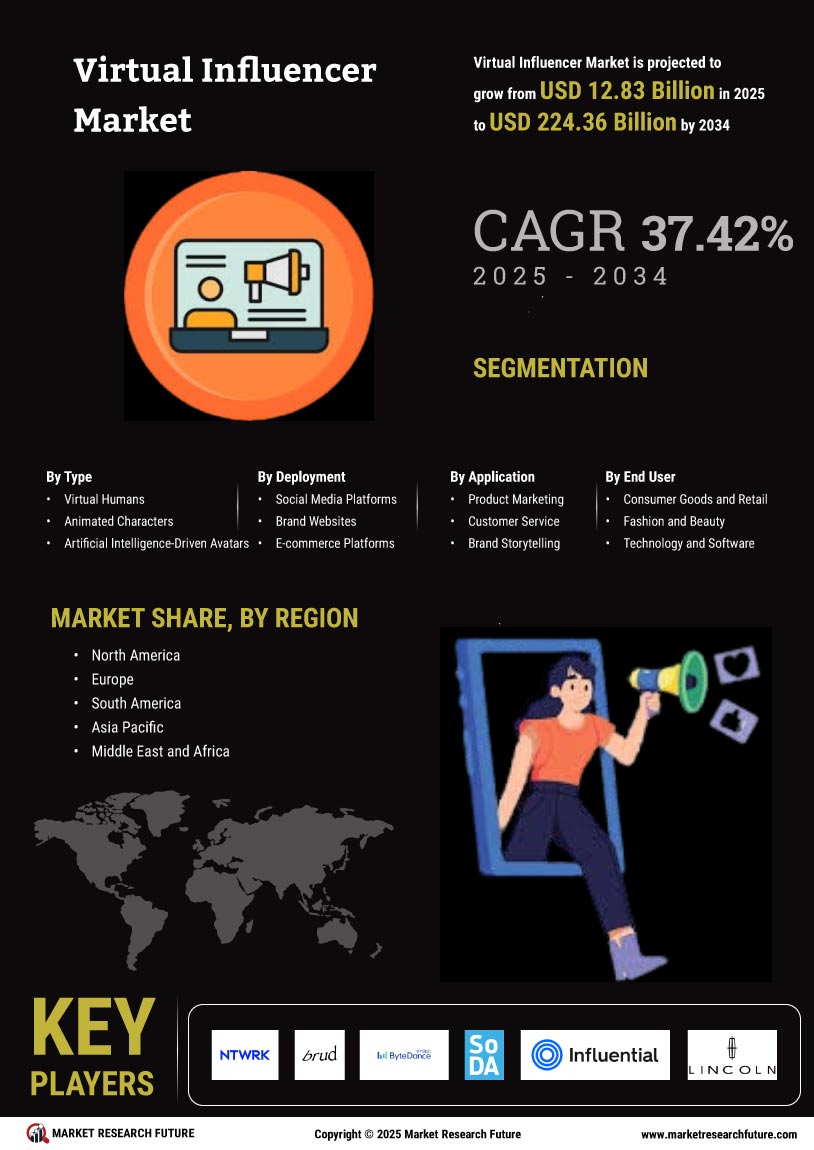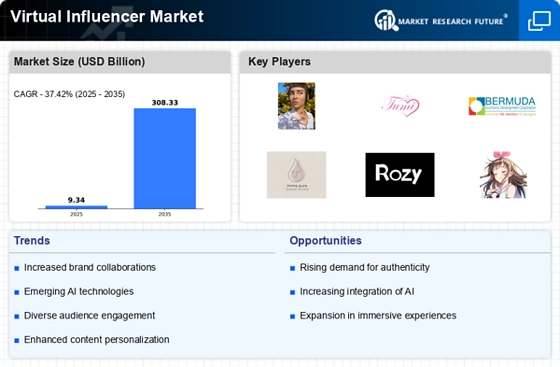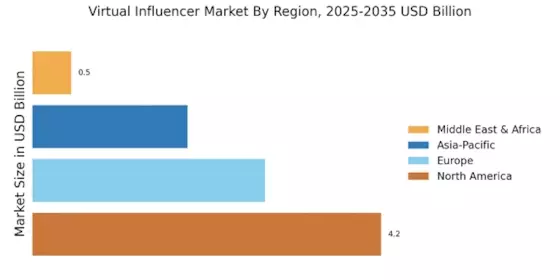The Virtual Influencer Market is currently characterized by a dynamic competitive landscape, driven by rapid technological advancements and evolving consumer preferences. Key players such as Lil Miquela (US), Shudu (GB), and Kizuna AI (JP) are at the forefront, each adopting distinct strategies to enhance their market presence. Lil Miquela (US) continues to innovate by integrating augmented reality features into her social media campaigns, thereby enhancing user engagement. Meanwhile, Shudu (GB) has focused on partnerships with fashion brands to promote inclusivity and diversity, positioning herself as a leader in ethical digital representation. Kizuna AI (JP) has expanded her reach through collaborations with gaming companies, leveraging her popularity in the gaming community to attract a broader audience. Collectively, these strategies not only shape their individual trajectories but also intensify the competitive dynamics within the market.
In terms of business tactics, companies are increasingly localizing their content to resonate with diverse audiences, which appears to be a crucial factor in their operational success. The market structure is moderately fragmented, with several players vying for attention, yet the influence of major companies is palpable. Their ability to optimize supply chains and enhance digital marketing strategies contributes to a competitive environment where innovation is paramount.
In August 2025, Lil Miquela (US) launched a groundbreaking virtual fashion line in collaboration with a leading apparel brand, marking a significant shift towards direct consumer engagement through virtual products. This initiative not only showcases her versatility as a virtual influencer but also indicates a potential trend where virtual influencers may become central figures in e-commerce, blurring the lines between digital and physical retail.
In September 2025, Shudu (GB) announced a partnership with a prominent beauty brand to create a limited-edition makeup line, emphasizing her commitment to diversity in beauty standards. This strategic move not only enhances her brand equity but also reflects a growing trend where virtual influencers are becoming integral to brand storytelling, thereby influencing consumer purchasing decisions.
In October 2025, Kizuna AI (JP) revealed plans to host a virtual concert in collaboration with a major music label, aiming to merge entertainment with interactive experiences. This initiative underscores the potential for virtual influencers to redefine entertainment consumption, suggesting that their role may evolve beyond mere marketing to become central figures in the entertainment industry.
As of October 2025, the competitive trends within the Virtual Influencer Market are increasingly defined by digitalization, sustainability, and the integration of artificial intelligence. Strategic alliances are becoming more prevalent, as companies recognize the value of collaborative efforts in enhancing their market positions. Looking ahead, it is likely that competitive differentiation will pivot from traditional price-based strategies to a focus on innovation, technological advancements, and the reliability of supply chains, thereby reshaping the landscape of the Virtual Influencer Market.


















Leave a Comment